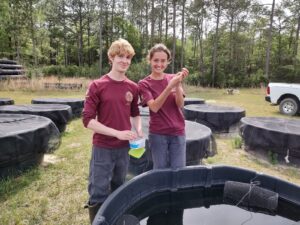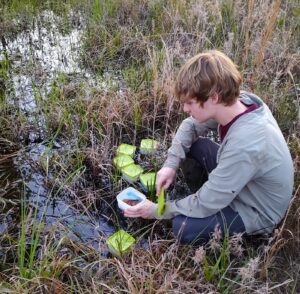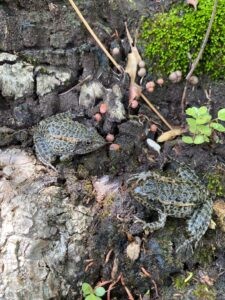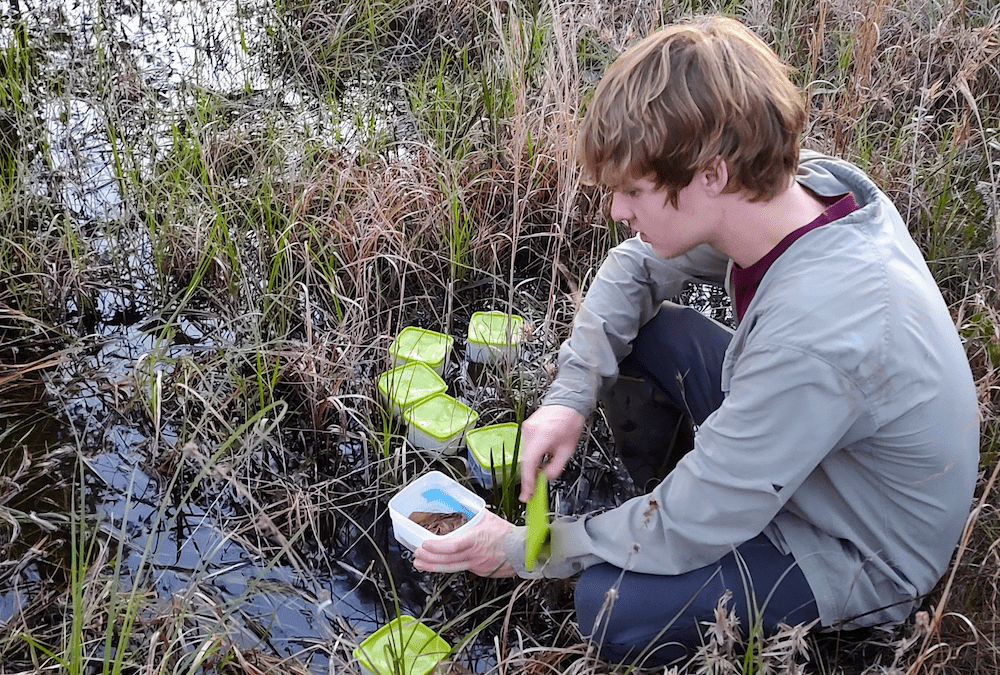
The frog eggs are collected from a breeding pond in winter and raised in captivity for around 3 months. Raising the tadpoles in captivity drastically improves their chance of survival since they are safe from predators and from the pond drying up. Head starting and habitat management are essential elements for the recovery of the Dusky Gopher Frog.

The pictures show the process of head starting. We raise the tadpoles in cattle tanks and conduct daily tank checks and feeding. Once tadpoles began to metamorph we put traps into the tanks to catch them. The frogs with legs and a tail are called “dragons”. Once we capture a metamorph frog in our trap we give them a unique color/number VIA tag inserted in their leg. Each metamorph is placed into a separate container. On release days we bring out a group of metamorphs 30 minutes before sunset and allow them to acclimate in the pond. After 30 minutes, they are set free.
I really enjoyed doing this work because it is easy to see the real-time value of our conservation efforts. It is incredibly rewarding to release the metamorphs you have just spent the past 3 months raising. Many hours of hard work went into maintaining the tanks, cleaning the tanks, and other tasks but it was always very worth it. Head starting, along with habitat management are great methods for conserving herp populations. For someone interested in conservation this is a dream job because you can really see the difference you are making not just on this population but on the species as a whole.

